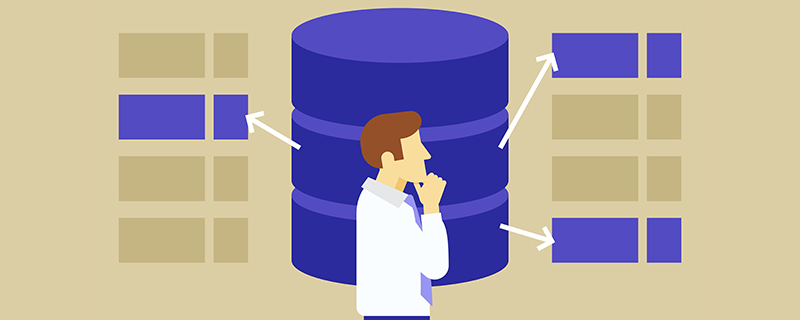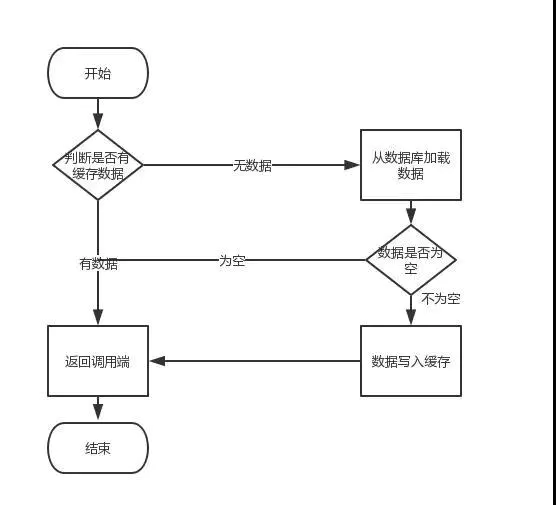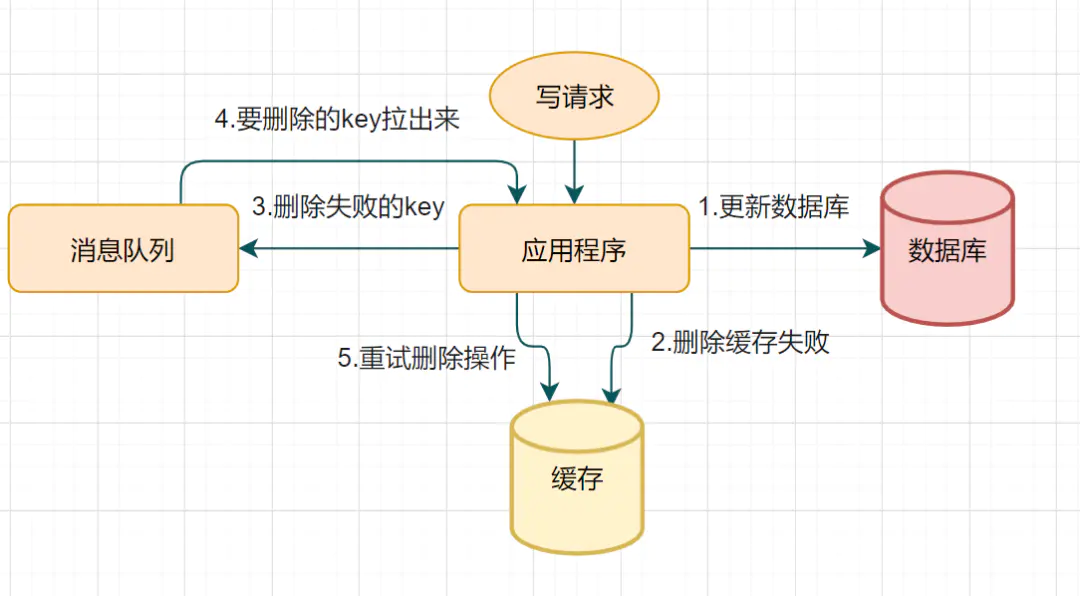 Database
Database
 Mysql Tutorial
Mysql Tutorial
 What should I do if the double-write caches of Redis and MySQL are inconsistent? Solution sharing
What should I do if the double-write caches of Redis and MySQL are inconsistent? Solution sharing
What should I do if the double-write caches of Redis and MySQL are inconsistent? Solution sharing
What should I do if the double-write cache of Redis and MySQL is inconsistent? This article will share with you how to solve the problem of cache double-write inconsistency. I hope it can help you!

redis and mysql double-write cache are inconsistent:

But in terms of updating the cache, for the update is complete Database, should we update the cache or delete the cache? Or delete the cache first and then update the database. In fact, there is a lot of controversy. Currently there is no comprehensive blog that analyzes these solutions. So the blogger wrote this article tremblingly and risking being criticized by everyone.
Text
Set the expiration time for cached data
Let me make an explanation first. In theory, set the cache Expiration time is a solution to ensure eventual consistency. Under this solution, we can set the expiration time for the data stored in the cache. All write operations are subject to the database, and we only need to do our best for cache operations. That is to say, if the database write is successful and the cache update fails, then as long as the expiration time is reached, subsequent read requests will naturally read new values from the database and backfill the cache. Therefore, the ideas discussed next do not rely on the solution of setting an expiration time for the cache.
Here, we first discuss three update strategies:
- Update the database first, then update the cache
- Delete the cache first, and then Update the database
- Update the database first, then delete the cache
Update the database first, then update the cache
This scheme is generally opposed by everyone . why? There are two points as follows:
- Reason one (thread safety perspective)
(1) Thread A updated the database
(2) Thread B updated the database
(3) Thread B updated the cache
(4) Thread A updated the cache
This means that requesting A to update the cache should be earlier than requesting B to update the cache, but due to network and other reasons, But B updated the cache earlier than A. This results in dirty data and is therefore not considered.
- Reason Two (Business Scenario Perspective)
(1) If you have business needs with more database writing scenarios and fewer data reading scenarios, use this This solution will cause the cache to be frequently updated before the data is read, which wastes performance.
(2) If the value you write to the database is not written directly into the cache, it must go through a series of complex calculations and then be written into the cache. Then, calculating the value written to the cache again every time it is written to the database is undoubtedly a waste of performance. Obviously, deleting the cache is more appropriate.
Delete the cache first, and then update the database
The reason why this solution will cause inconsistency is. At the same time, one requests A to perform an update operation, and the other requests B to perform a query operation. Then the following situation will occur:
(1) Request A to perform a write operation and delete the cache
(2) Request B to query and find that the cache does not exist
(3) Request B to query the database to obtain the old value
(4) Request B to write the old value into the cache
(5) Request A to write the new value into the database
The above situation will lead to inconsistencies. Moreover, if you do not set an expiration time strategy for the cache, the data will always be dirty data.
So, how to solve it? Adopt delayed double deletion strategy
Cache delayed double deletion
public class CacheServiceImpl implements ICacheService {
@Resource
private RedisOperator redisOperator;
@Autowired
private IShopService shopService;
//1. 采用延时双删,解决数据库和缓存的一致性
@Override
public void updateHotCount(String id) {
try {
//删除缓存
redisOperator.del("redis_key_" + id);
//更新数据库
shopService.updataHotShop();
Thread.sleep(1000);//休眠1秒
//延时删除
redisOperator.del("redis_key_" + id);
} catch (InterruptedException e) {
e.printStackTrace();
}
}
@Override
public Integer getHotCount(String id) {
return null;
}}Explanation:
- Eliminate the cache first
- Write the database again
- Sleep for 1 second, and then eliminate the cache (By doing this, you can delete the cached dirty data caused within 1 second again.)
In view of the above situation, readers should evaluate the time-consuming data reading business logic of their own projects. Then the sleep time for writing data is based on the time consuming for reading data business logic, plus a few hundred milliseconds. The purpose of this is to ensure that the read request ends, and the write request can delete the cached dirty data caused by the read request.
What if the database adopts a read-write separation architecture? (The main library is responsible for writing operations, and the slave library is responsible for reading operations)
ok, in this case, the reasons for data inconsistency are as follows, there are still two requests and one request A performs an update operation, and the other requests B to perform a query operation.
(1) Request A to perform a write operation, delete the cache, and request A to write data to the main library. Synchronization from the slave library has not started yet
(2)(Within 1s) Request B to query the cache , the cache is not found, and B is requested to query the slave database. At this time, the master-slave synchronization has not been completed, and the old value is found, and the old value is written to the cache.
(3) The master database completes the master-slave synchronization, and the slave database changes to the new value
The above process is the problem of data inconsistency, and a double-deletion delay strategy is also used. However, the sleep time is modified to be based on the master-slave synchronization delay time, plus a few hundred ms
If this synchronization elimination strategy is adopted, what should I do if the throughput is reduced?
ok, then treat the second deletion as asynchronous. Start a thread yourself and delete it asynchronously. In this way, the written request does not have to sleep for a period of time before returning. Doing so increases throughput.
What should I do if the deletion fails for the second time?
This is a very good question, because if the deletion fails for the second time, the following situation will occur. There are still two requests, one requests A to perform an update operation, and the other requests B to perform a query operation. For convenience, it is assumed to be a single database:
(1) Request A to perform a write operation and delete the cache
( 2) Request B to query and find that the cache does not exist
(3) Request B to query the database to get the old value
(4) Request B to write the old value into the cache
(5) Request A to write the new value Database
(6) Request A tried to delete the cache value written by request B, but failed.
ok, that is to say. If the cache deletion fails for the second time, the cache and database inconsistency will occur again.
How to solve it?
For specific solutions, let’s look at the blogger’s analysis of the update strategy of updating the database first and then deleting the cache.
Delete cache retry mechanism
Whether it is Delayed double deletion or Cache-Aside first operates the database and then deletes the cache, there may be data inconsistency problems caused by failure to delete the cache in the second step. You can use this solution to optimize: if the deletion fails, delete it a few more times to ensure that the cache deletion is successful~ So you can introduce a delete cache retry mechanism

- (1) Update database data;
(2) Cache deletion failed due to various problems
(3) Send the key that needs to be deleted to the message queue
(4) Consume the message yourself, Obtain the key that needs to be deleted
(5) Continue to retry the deletion operation until it succeeds
However, this solution has a shortcoming, causing a lot of intrusion into the business line code. So we have the second option. In the second option, start a subscription program to subscribe to the binlog of the database to obtain the data that needs to be operated. In the application, start a new program to obtain the information from this subscription program and delete the cache.
Read biglog and delete cache asynchronously
The process is as shown in the figure below:
(1) Update database Data
(2) The database will write the operation information into the binlog log
(3) The subscription program extracts the required data and key
(4) Start a new section of non-business code to obtain the information
(5) Try to delete the cache operation and find that the deletion failed
(6) Send the information to the message queue
(7) Re-obtain the data from the message queue and retry the operation.
Remarks: The above binlog subscription program has a ready-made middleware called canal in mysql, which can complete the function of subscribing to binlog logs. As for Oracle, the blogger currently does not know if there is any ready-made middleware that can be used. In addition, as for the retry mechanism, the blogger uses a message queue. If the consistency requirements are not very high, just start a new thread in the program and try again every once in a while. You can use this flexibly, but I just provide an idea.
This article is actually a summary of the existing consistency solutions in the Internet. Regarding the update strategy of first deleting the cache and then updating the database, there is also a plan to maintain a memory queue. The blogger looked at it and felt that the implementation is extremely complicated and unnecessary, so there is no need to give it in the article. Finally, I hope you all gained something.
[Related recommendations: mysql video tutorial]
The above is the detailed content of What should I do if the double-write caches of Redis and MySQL are inconsistent? Solution sharing. For more information, please follow other related articles on the PHP Chinese website!

Hot AI Tools

Undresser.AI Undress
AI-powered app for creating realistic nude photos

AI Clothes Remover
Online AI tool for removing clothes from photos.

Undress AI Tool
Undress images for free

Clothoff.io
AI clothes remover

AI Hentai Generator
Generate AI Hentai for free.

Hot Article

Hot Tools

Notepad++7.3.1
Easy-to-use and free code editor

SublimeText3 Chinese version
Chinese version, very easy to use

Zend Studio 13.0.1
Powerful PHP integrated development environment

Dreamweaver CS6
Visual web development tools

SublimeText3 Mac version
God-level code editing software (SublimeText3)

Hot Topics
 1359
1359
 52
52
 How to use MySQL backup and restore in PHP?
Jun 03, 2024 pm 12:19 PM
How to use MySQL backup and restore in PHP?
Jun 03, 2024 pm 12:19 PM
Backing up and restoring a MySQL database in PHP can be achieved by following these steps: Back up the database: Use the mysqldump command to dump the database into a SQL file. Restore database: Use the mysql command to restore the database from SQL files.
 How to optimize MySQL query performance in PHP?
Jun 03, 2024 pm 08:11 PM
How to optimize MySQL query performance in PHP?
Jun 03, 2024 pm 08:11 PM
MySQL query performance can be optimized by building indexes that reduce lookup time from linear complexity to logarithmic complexity. Use PreparedStatements to prevent SQL injection and improve query performance. Limit query results and reduce the amount of data processed by the server. Optimize join queries, including using appropriate join types, creating indexes, and considering using subqueries. Analyze queries to identify bottlenecks; use caching to reduce database load; optimize PHP code to minimize overhead.
 How to insert data into a MySQL table using PHP?
Jun 02, 2024 pm 02:26 PM
How to insert data into a MySQL table using PHP?
Jun 02, 2024 pm 02:26 PM
How to insert data into MySQL table? Connect to the database: Use mysqli to establish a connection to the database. Prepare the SQL query: Write an INSERT statement to specify the columns and values to be inserted. Execute query: Use the query() method to execute the insertion query. If successful, a confirmation message will be output.
 How to create a MySQL table using PHP?
Jun 04, 2024 pm 01:57 PM
How to create a MySQL table using PHP?
Jun 04, 2024 pm 01:57 PM
Creating a MySQL table using PHP requires the following steps: Connect to the database. Create the database if it does not exist. Select a database. Create table. Execute the query. Close the connection.
 How to fix mysql_native_password not loaded errors on MySQL 8.4
Dec 09, 2024 am 11:42 AM
How to fix mysql_native_password not loaded errors on MySQL 8.4
Dec 09, 2024 am 11:42 AM
One of the major changes introduced in MySQL 8.4 (the latest LTS release as of 2024) is that the "MySQL Native Password" plugin is no longer enabled by default. Further, MySQL 9.0 removes this plugin completely. This change affects PHP and other app
 How to delete data from MySQL table using PHP?
Jun 05, 2024 pm 12:40 PM
How to delete data from MySQL table using PHP?
Jun 05, 2024 pm 12:40 PM
PHP provides the following methods to delete data in MySQL tables: DELETE statement: used to delete rows matching conditions from the table. TRUNCATETABLE statement: used to clear all data in the table, including auto-incremented IDs. Practical case: You can delete users from the database using HTML forms and PHP code. The form submits the user ID, and the PHP code uses the DELETE statement to delete the record matching the ID from the users table.
 How to set up MySQL connection pool using PHP?
Jun 04, 2024 pm 03:28 PM
How to set up MySQL connection pool using PHP?
Jun 04, 2024 pm 03:28 PM
Setting up a MySQL connection pool using PHP can improve performance and scalability. The steps include: 1. Install the MySQLi extension; 2. Create a connection pool class; 3. Set the connection pool configuration; 4. Create a connection pool instance; 5. Obtain and release connections. With connection pooling, applications can avoid creating a new database connection for each request, thereby improving performance.
 Why does an error occur when installing an extension using PECL in a Docker environment? How to solve it?
Apr 01, 2025 pm 03:06 PM
Why does an error occur when installing an extension using PECL in a Docker environment? How to solve it?
Apr 01, 2025 pm 03:06 PM
Causes and solutions for errors when using PECL to install extensions in Docker environment When using Docker environment, we often encounter some headaches...




